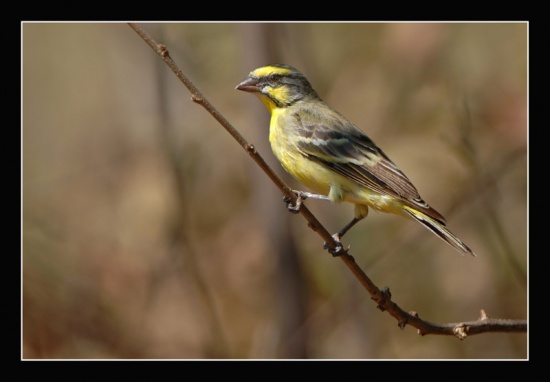(Attempt to disguise copied text. Distribution & Taxonomy expanded. References.) |
(taxonomy, reference updated) |
||
| Line 25: | Line 25: | ||
====Subspecies==== | ====Subspecies==== | ||
There are 10 subspecies<sup>[[#References|[1]]]</sup>: | There are 10 subspecies<sup>[[#References|[1]]]</sup>: | ||
| − | *'' | + | *''C. m. caniceps'': [[Senegal]] to [[Cameroon]] (south to Benue plain) |
| − | *'' | + | *''C. m. punctigula'': Cameroon (north to Toukte, Grand Capitaine and Koum) |
| − | *'' | + | *''C. m. tando'': [[Gabon]] to northern [[Angola]] and south-western [[Democratic Republic of the Congo]]; introduced [[São Tomé]] |
| − | *'' | + | *''C. m. vansoni'': Extreme south-eastern [[Angola]] and adjacent [[Namibia]] to northern [[Botswana]], south-western [[Zambia]] |
| − | *'' | + | *''C. m. barbata'': Southern [[Chad]], [[Central African Republic]], western [[Sudan]], western and southern [[South Sudan]], eastern [[Democratic Republic of the Congo]], [[Uganda]], southwestern [[Kenya]], and central [[Tanzania]] |
| − | *'' | + | *''C. m. samaliyae'': South-eastern Democratic Republic of the Congo to south-western [[Tanzania]] and adjacent Zambia |
| − | *'' | + | *''C. m. grotei'': Southeastern [[Sudan]] (east of the Nile), eastern [[South Sudan]], and western and southwestern [[Ethiopia]] |
| − | *'' | + | *''C. m. gommaensis'': [[Eritrea]] and northwestern and central [[Ethiopia]] |
| − | *'' | + | *''C. m. mozambica'': coastal [[Kenya]] and Mafia Island (Tanzania) south to [[Zimbabwe]], [[Mozambique]], eastern and south-eastern [[Botswana]], and north-eastern [[South Africa]] (North West and Limpopo to Free State) |
| − | *'' | + | *''C. m. granti'': eastern South Africa (Mpumalanga and [[KwaZulu-Natal]] south to Eastern Cape), eastern [[Swaziland]], and southern [[Mozambique]] |
==Habitat== | ==Habitat== | ||
| Line 44: | Line 44: | ||
Their diet consists mostly of grass and weed seeds; other plant material such as buds, flowers and leaves. They also eat insects. | Their diet consists mostly of grass and weed seeds; other plant material such as buds, flowers and leaves. They also eat insects. | ||
==References== | ==References== | ||
| − | #{{Ref- | + | #{{Ref-Clements6thAug17}}#Avibase |
#Handbook of the Birds of the World Alive (retrieved October 2015) | #Handbook of the Birds of the World Alive (retrieved October 2015) | ||
#Wikipedia | #Wikipedia | ||
Revision as of 19:20, 28 September 2017
- Crithagra mozambica
Serinus mozambicus
Identification
11–13 cm (4¼-5 in)
- Green back
- Broad supercilium
- Yellow head, underparts and rump
- Grey crown and nape
- Black malar stripe
- Brown wings and short tail
Female: similar, thous has duller underparts and less marked head pattern
Juveniles: greyer than the female, especially on the head.
Distribution
Sub-Saharan Africa:
Western Africa: Mauritania, Senegal, The Gambia, Guinea-Bissau, Mali, Sierra Leone, Liberia, Ivory Coast, Burkina Faso, Ghana, Togo, Benin, Nigeria, Niger, Chad, Cameroon, Central African Republic, Equatorial Guinea, Gabon, Democratic Republic of Congo, Angola
Eastern Africa: Sudan, South Sudan, Eritrea, Ethiopia, Kenya, Uganda, Rwanda, Burundi, Tanzania, Zambia, Mozambique, Malawi
Southern Africa: Namibia, Botswana, Zimbabwe, South Africa, KwaZulu-Natal, Swaziland.
Introduced to many countries including the Hawaiian Islands, where it is common and widespread.
Taxonomy
Placed in genus Serinus by Clements.
Subspecies
There are 10 subspecies[1]:
- C. m. caniceps: Senegal to Cameroon (south to Benue plain)
- C. m. punctigula: Cameroon (north to Toukte, Grand Capitaine and Koum)
- C. m. tando: Gabon to northern Angola and south-western Democratic Republic of the Congo; introduced São Tomé
- C. m. vansoni: Extreme south-eastern Angola and adjacent Namibia to northern Botswana, south-western Zambia
- C. m. barbata: Southern Chad, Central African Republic, western Sudan, western and southern South Sudan, eastern Democratic Republic of the Congo, Uganda, southwestern Kenya, and central Tanzania
- C. m. samaliyae: South-eastern Democratic Republic of the Congo to south-western Tanzania and adjacent Zambia
- C. m. grotei: Southeastern Sudan (east of the Nile), eastern South Sudan, and western and southwestern Ethiopia
- C. m. gommaensis: Eritrea and northwestern and central Ethiopia
- C. m. mozambica: coastal Kenya and Mafia Island (Tanzania) south to Zimbabwe, Mozambique, eastern and south-eastern Botswana, and north-eastern South Africa (North West and Limpopo to Free State)
- C. m. granti: eastern South Africa (Mpumalanga and KwaZulu-Natal south to Eastern Cape), eastern Swaziland, and southern Mozambique
Habitat
Lowland open woodland, bush, scrub, savanna, agricultural land, gardens.
Behaviour
Breeding
They build a compact nest in trees; the clutch consists of 3–4 eggs.
Diet
Their diet consists mostly of grass and weed seeds; other plant material such as buds, flowers and leaves. They also eat insects.
References
- Clements, J. F., T. S. Schulenberg, M. J. Iliff, D. Roberson, T. A. Fredericks, B. L. Sullivan, and C. L. Wood. 2017. The eBird/Clements checklist of birds of the world: v2017, with updates to August 2017. Downloaded from http://www.birds.cornell.edu/clementschecklist/download/
- Avibase
- Handbook of the Birds of the World Alive (retrieved October 2015)
- Wikipedia
- BF Member observations
Recommended Citation
- BirdForum Opus contributors. (2024) Yellow-fronted Canary. In: BirdForum, the forum for wild birds and birding. Retrieved 30 April 2024 from https://www.birdforum.net/opus/Yellow-fronted_Canary




